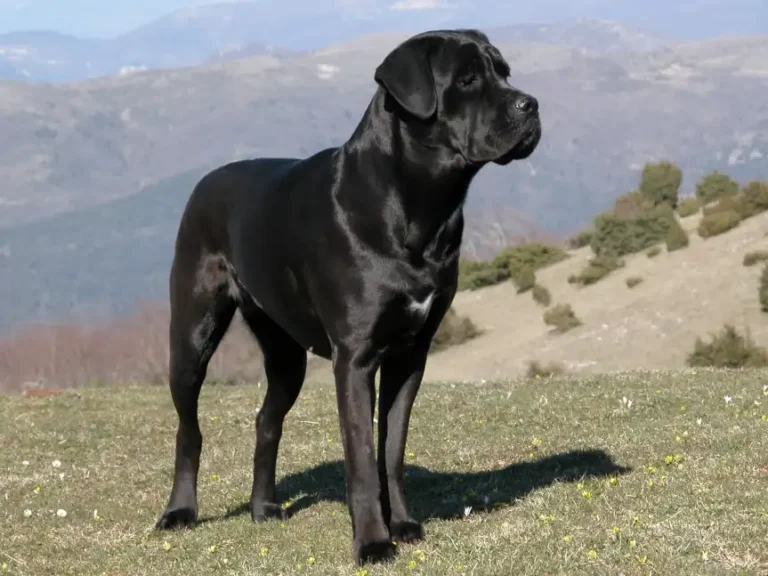Top 10 Dogs-The biggest dog in the world
Top 10 Biggest Dogs
What dogs are considered large breeds? Usually, this group includes pets weighing over 25 kg. There is also a group of “giants” whose weight exceeds 45 kg. How much does the largest dog weigh? It is difficult to give a clear answer, approximately 100 kg.
We have collected photographs of all representatives of the largest breeds in our material.
Saint Bernard
The “St. Bernard’s Dogs” or St. Bernards, pictured above, originated in Switzerland, where in the 11th century, in the Alps, a monk named Bernard founded a shelter for travelers at a monastery. It was located on a mountain path and pass that later became known as the “St. Bernard’s Path” and the “Great St. Bernard” pass.
These places were very dangerous for travel, so the large dogs that lived at the shelter became not only guards, but also guides and protectors of travelers. In the 17th century, monks began to use these strong animals to save people from under the rubble of mountain avalanches.
These are very strong, large dogs (males reach 75-80 cm at the withers). They are calm, careful in communication with children, extremely devoted to their owners and home.
If you decide to get a St. Bernard puppy, you should pay close attention to your friend’s weight and activity level – rapid weight gain can have a negative impact on joints, so a balanced diet and regular exercise within the framework of a plan developed by a dog trainer specializing in the breed or a veterinarian are of great importance.
The average life expectancy of a St. Bernard is up to 10 years, but there have been cases in the Alps where representatives of the breed have lived up to 16 years.
English Mastiff
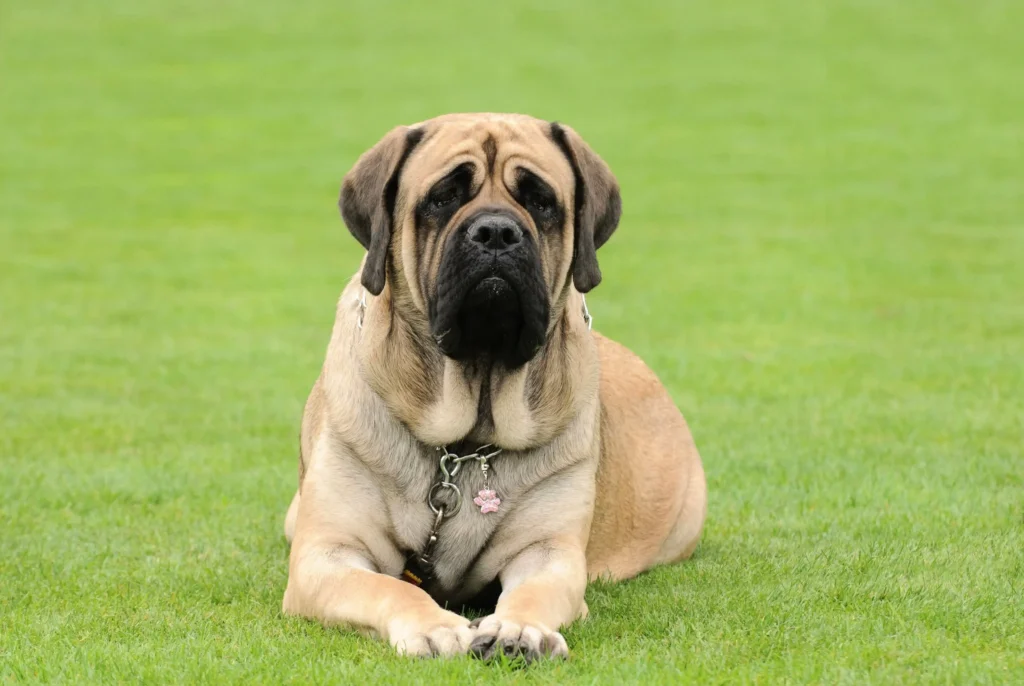
The English Mastiff is the oldest breed of mastiffs in Britain and one of the oldest in human history. There are several points of view on its origin: some historians believe that the closest ancestor could be the Tibetan Mastiff, which from the mountains of Tibet through Assyria, Babylon, Egypt and Persia got to Greece and then to Rome, from where it went with the Romans to the territory of Britain and Gaul.
Others believe that the dogs came to Europe with the Celtic tribes from Asia Minor. Still others are sure that mastiffs first visited Britain and only from there came to Rome with the Romans. The latter theory could be supported by Julius Caesar’s mention of “huge British dogs that fought alongside their masters” in 55 BC.
The breed got its name in Rome. Mastiffs began to be used in the army, for hunting large animals, guarding and surveillance.
This is a proportionally built, muscular dog with a massive angular head, tall stature (males reach 76-80 cm at the withers), short-haired, with very massive strong jaws that have incredible compression strength with a “pincer” bite, and very powerful fangs.
Mastiffs, like any very large dogs, have a life expectancy somewhat shorter than small breeds, and it averages up to 10 years. But there have been cases when pets lived up to 18 years.
Alabai
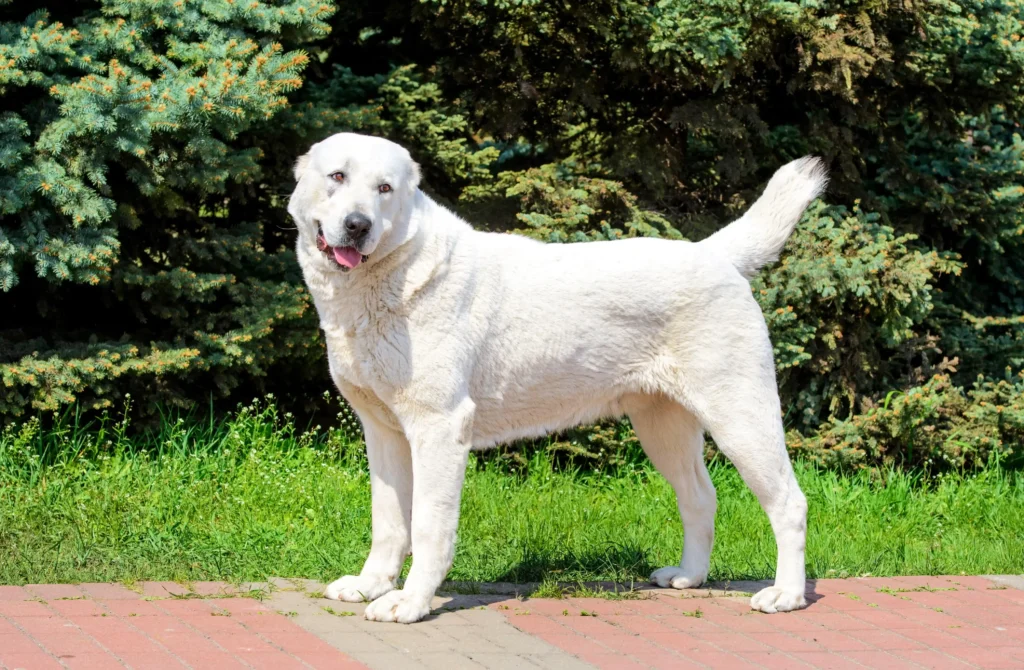
The Central Asian Shepherd Dog, Alabai, or Tobet, is an ancient aboriginal breed of dog that has undergone virtually no selection throughout its history. The territory of origin of the Alabai is the countries of Central Asia, where for centuries shepherds and nomadic tribes used these dogs to guard flocks and camps.
Alabai is a symbol of national pride of Turkmenistan (along with the Akhal-Teke stallion). It is practically forbidden to export abroad, and in ancient times it was even an object of bragging and a symbol of the status of rulers – those who could afford to keep the largest number of these beautiful proud animals. There are legends that the ancestors of the Alabai lived in the Golden Horde and were kept under Temuchin (Tamerlane) as his favorites and best guards.
Today, Alabai are very popular as “employees” of law enforcement agencies: they serve in the border troops, the police, and in special units of the Ministry of Emergency Situations. Russian biologists have been studying the history and selection of this breed since the 18th century, and after the revolution, the Soviet government included the Alabai in a special list of “working” breeds for service in the ranks of the Red Army and began active breeding in the USSR.
Alabai are very massive, large animals, with a large, wide head and a flat forehead. The body is wide, voluminous, with a deep chest, powerful and strong. The coat is coarse, short, straight and hard, with a thick undercoat.
The height of the largest dog of this breed is impressive – the height at the withers of males can reach 73 cm, weight fluctuates between 40 and 80 kg depending on gender.
Irish Wolfhound
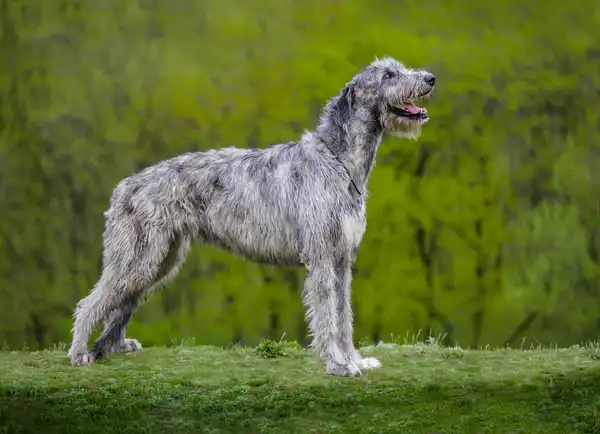
Hundreds of years ago, large dogs were in great demand in Ireland ⎯ for guarding, hunting, and even helping with household chores, such as delivering small loads. This is how this unique breed appeared, the first documented mention of which we can find in 391 from the Roman consul among the Celtic and British tribes.
Initially, dogs of this breed were divided into two types – short-haired and long-haired, but the genetics of the latter won out – probably, in part, due to the cool climate of Ireland.
The breed turned out to be unique – unpretentious in maintenance, impressive in appearance and with the kindest character.
In the Middle Ages, a pair of Irish wolfhounds could become a desirable and prestigious gift for any European ruler and an adornment of the royal court. They were actively presented to monarchs of Europe, Scandinavian countries, the Russian royal court, and in Britain, each county was legally obliged to keep 25 wolfhounds to protect the herds from predators.
The Irish Wolfhound is calm and good-natured at home, but becomes a powerhouse in a situation where its guard qualities are needed. These are very tall dogs, muscular, graceful and even elegant, light, swift, carrying their heads high. The minimum height at the withers for a male is not less than 85–86 cm, and the minimum weight is 54–55 kg.
Spanish Mastiff
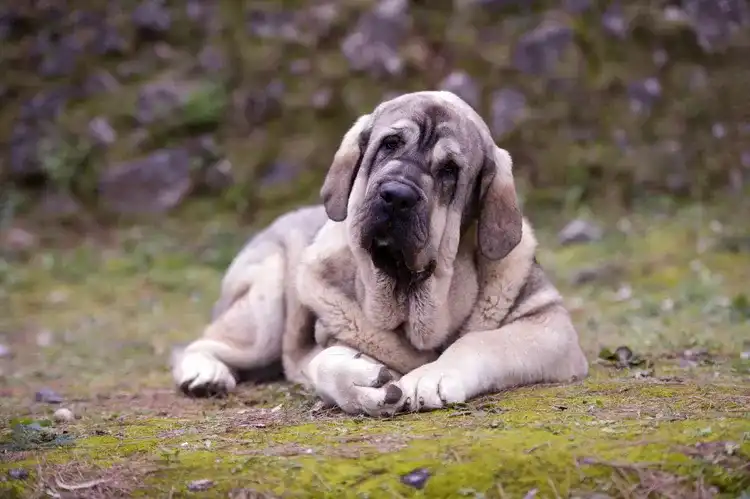
The history of the origin of the Spanish Mastiff is not as rich in major historical facts as that of its other large brethren, but in terms of impressive appearance it is in no way inferior to them.
This is a factory breed originating in the region of Extremadura. Among the ancestors of the Spanish Mastiff are guard and shepherd dogs. This pet was bred with a clear goal ⎯ to create a working farm breed that would combine two main qualities needed on the “land”: a guard and a shepherd. However, the Spanish Mastiff also proved itself to be an excellent hunter, with whom they even went hunting for wild boar and bear.
In 1982, the breed received a standard as an independent one.
The Spanish Mastiff has a very unusual, distinctive appearance. It is a large and powerful dog, comparable in body weight, perhaps, only to the Boerboel. Males are significantly larger than females, and make a very formidable impression in appearance. They are superbly built, have large, powerful bones, pronounced muscles, thick hair with undercoat, which fits tightly to the body and protects from wind, moisture and cold.
The minimum height for a male Spanish Mastiff is 77 cm, and the larger and taller the dog, the more valuable it is. The overall lifespan is approximately 11-12 years.
Caucasian Shepherd Dog
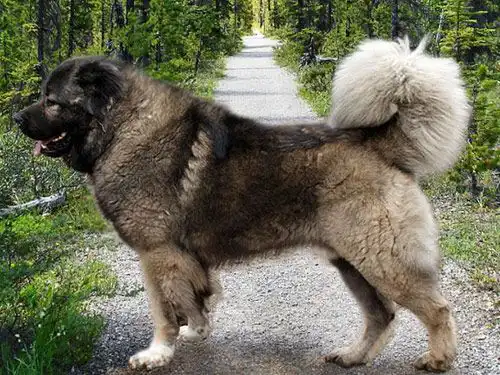
One of the most ancient breeds of molossers, which has preserved many features typical of it since the Bronze Age. It originates from ancient shepherd dogs from the Caucasus, lands adjacent to the ridge of the same name, and the steppes of the south of modern Russia.
The first mention of a mastiff-like dog used to guard troops can be found in ancient Assyrian chronicles and even on the bas-reliefs of the state of Urartu. The history of the breed has been virtually untouched by human intervention, undergoing selection as a result of natural selection. People used the Caucasian Shepherd Dog primarily for guarding.
Work on the breed began only in the Soviet Union in the 1920s and 1930s and concerned mainly working qualities. Endurance, physical strength, visual acuity, sense of smell, and quality of wool, capable of withstanding various weather conditions, were subject to strengthening.
This is one of the largest dog breeds ⎯ the height of a male at the withers can reach 85 cm or more, and the weight can exceed 100 kg.
A difficult breed to train – this dog is persistent, stubborn in achieving its goal, distrustful of everyone except its owner, it usually lacks fear, so training is extremely important.
Russian Black Terrier
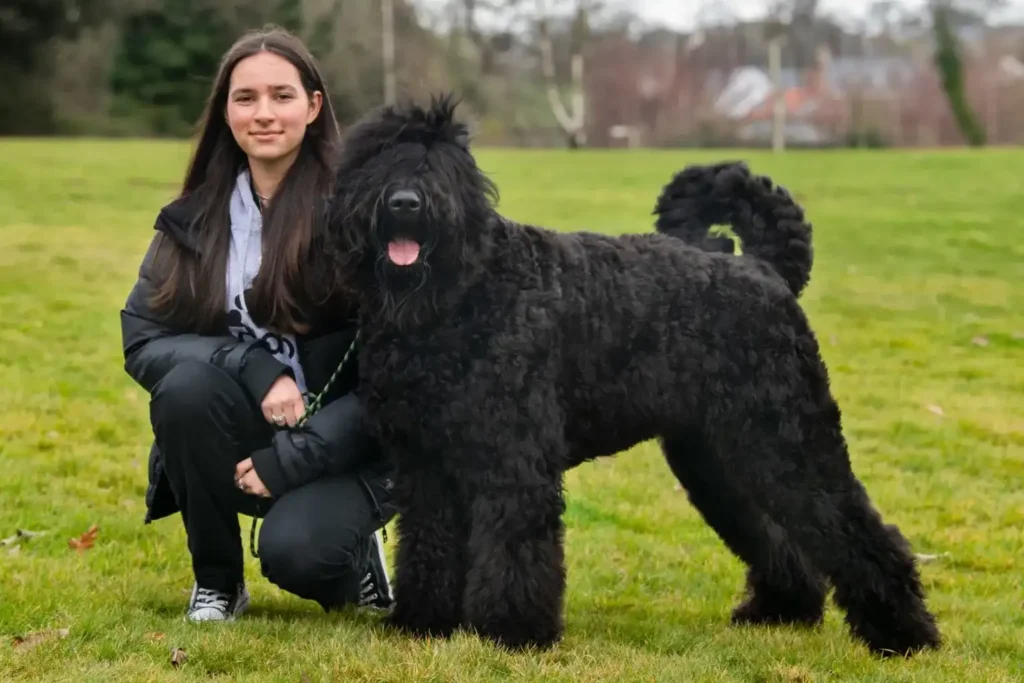
The Russian Black Terrier is considered one of the best service breeds in the world. It was bred in the middle of the 20th century in the Moscow region kennel “Red Star” ⎯ as the legend goes, on the direct orders of I. V. Stalin. The goal was to obtain an ideal breed that would combine all the functions necessary in service ⎯ guard, protection, combat and sports.
Selection took place by crossing the Rottweiler, Airedale Terrier, Giant Schnauzer (the original breed that gave the basis for the appearance of the Russian Black Terrier), Newfoundland, and other service breeds.
In 1950, the nursery began selling puppies not only for official purposes ⎯ there was a need to popularize the breed, so both amateurs and future breeders began to buy the babies. By the end of 1970, there were already 800 litters of black Russian terriers in the USSR, and the total number of puppies exceeded 4,000. Since the end of 1980, the dogs began to take part in international exhibitions and gained extraordinary popularity throughout the world.
In 1981, the breed received a standard and was registered by the International Cynological Federation.
Russian Black Terriers are significantly taller than the Giant Schnauzer, have robust health, an athletic build, a slightly elongated body, developed muscles, strong teeth with a scissor bite, double, very dense hair ⎯ they definitely need grooming. Males at the withers have a height of up to 78 cm, and weight can vary from 50 to 60 kg.
Newfoundland
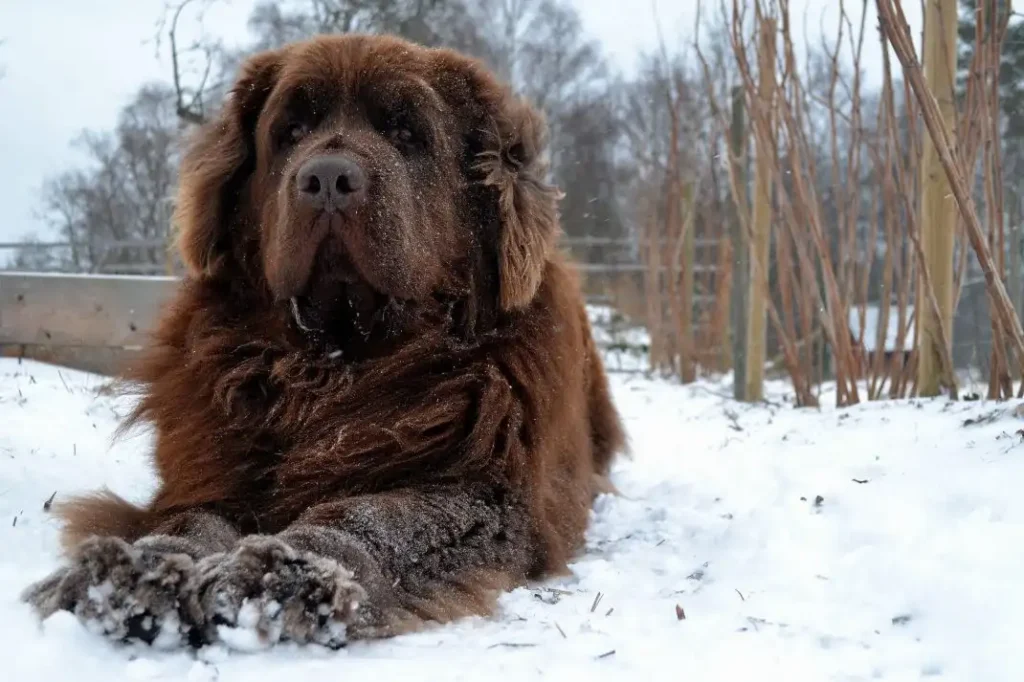
A working breed from the island of Newfoundland, after which it was named. The exact origins are still debated. According to one version, it arose as a result of crossing a black wolf (which no longer exists) with mastiffs from Asia, according to another, Viking dogs crossed with wolves. The American Kennel Club put forward the version that the ancestors of the Newfoundland are Pyrenean dogs that came to the island with Basque fishermen.
In the late 19th century, there were two varieties of these dogs on the island – massive, long-haired, and medium-sized, smooth-haired – called “large and small Newfoundlands.” The small one was also called “St. John’s water dog.” Both types were active in the lives of local fishermen, pulling nets out of the water and transporting small carts with cargo. It is believed that at some point, the large Newfoundland was crossed with a mastiff, which is how it got its impressive appearance and size.
These are dogs with a powerful body and well-developed coordination. The head is massive, with large jaws with a very high compression force, the neck is strong, the head is large and round. Very thick fur has water-repellent properties. The height at the withers of males reaches 70-72 cm, and the weight is about 54 kg.
Russian Borzoi
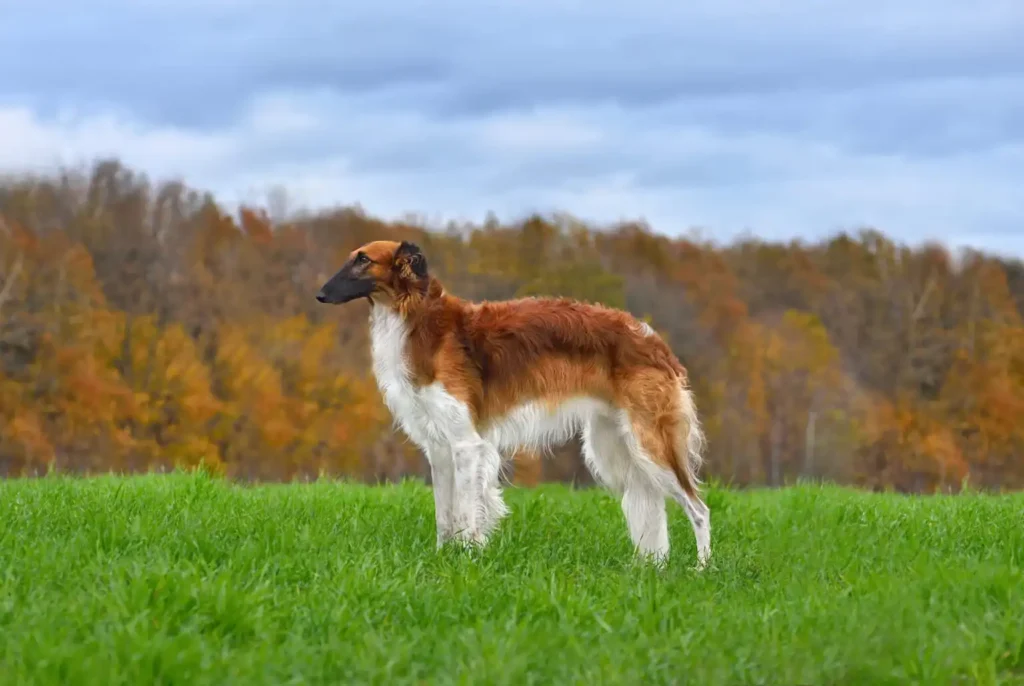
The Russian Borzoi is perhaps one of the most quoted and depicted breeds in literature and fine art.
The first mention of an independent breed dates back to the 17th century, although work on it began in the 16th century. But there are even earlier sources about dogs of this phenotype, which go back to the Grand Duke of Novgorod, to 1260. Of the Russian breeds that received a standard, this is perhaps the very first ⎯ a semblance of such a set of characteristics can be attributed to the “Regulation on real hound hunting” of 1635.
The first official standard (Russian) was established in 1888, and since then the breed formation of these dogs began. In 1842, the Russian psovaya came to Britain and immediately received great attention, and in 1891, the American Kennel Club assigned its standard and recognized the breed.
These dogs are among the top largest not because of their massiveness, but because of their height. They are slender, high at the withers (males grow up to 86 cm), but due to their luxurious, soft and thin fur, they seem a little larger than they actually are. They have a narrow, elongated head with a long nose, soft hanging ears, almond-shaped, elongated eyes, an arched back, which is significantly higher than the withers.
Boerboel
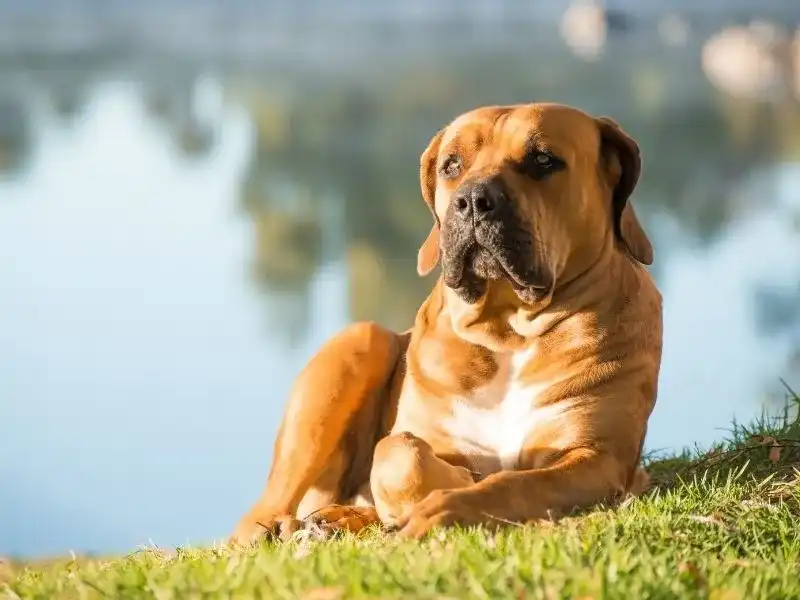
An African breed not recognized by the FCI, the Boerboel is believed to be related to the ancient molosser dogs from Europe that were once brought to South Africa by slave traders and crossed with local breeds.
These are service dogs with unique guard qualities, which were traditionally used to ensure security. The first selection of the Boerboel was undertaken by South African cynologists, who set themselves the goal of bringing the mastiff traits in the Boerboel to perfection.
Despite its outward “clumsiness”, the Boerboel is an incredibly agile and dynamic dog, capable of developing great speed and giving an instant reaction. It has high intellectual abilities, which allow it not only to objectively assess the situation, but also to make a quick decision.
The Boerboel has a powerful, elongated body, developed muscles, very developed legs, a large head and jaws of extraordinary strength. Smooth, hard hair lies close to the body. The height at the withers for a male is up to 70 cm, the weight can reach 90 kg.

